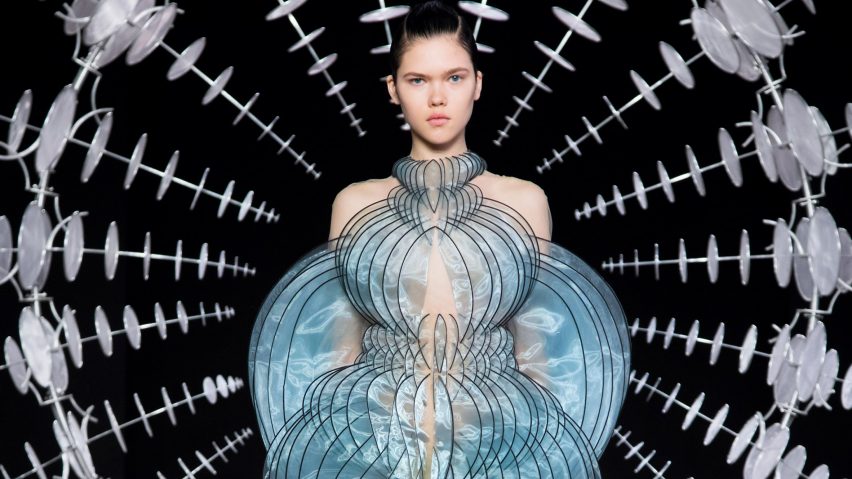
Iris van Herpen emulates a state of hypnosis for latest couture collection
Fashion designer Iris van Herpen took inspiration from artist Anthony Howe's kinetic sculptures when creating this series of delicate and hypnotic garments for Paris Haute Couture week.
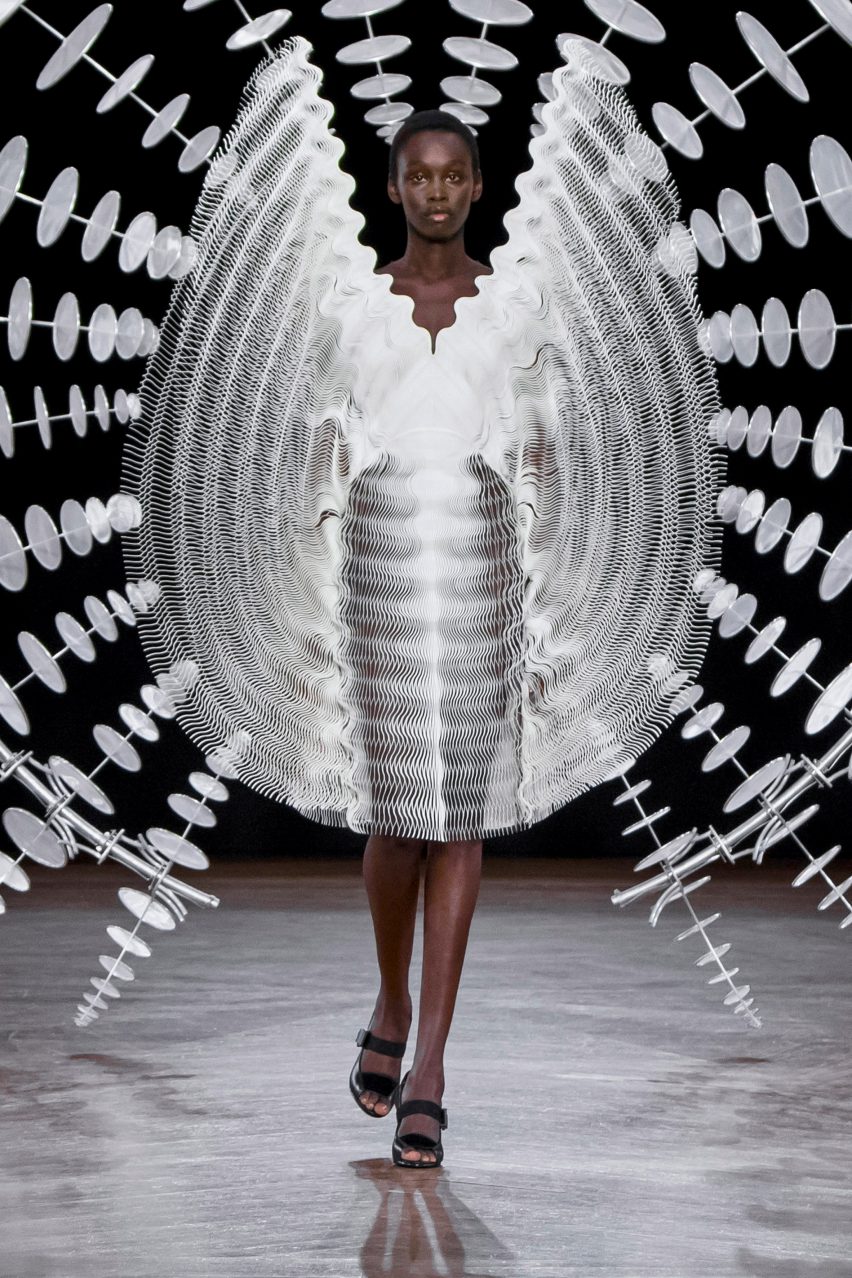
The Dutch designer presented her latest collection, titled Hypnosis, on 1 July 2019 at Élysée Montmartre in Paris for the city's Haute Couture fashion week.
Comprised of 19 different, multilayered looks, Hypnosis aims to reflect "the beauty and complexity of our environment" by mimicking the delicate patterns and structures found in nature.
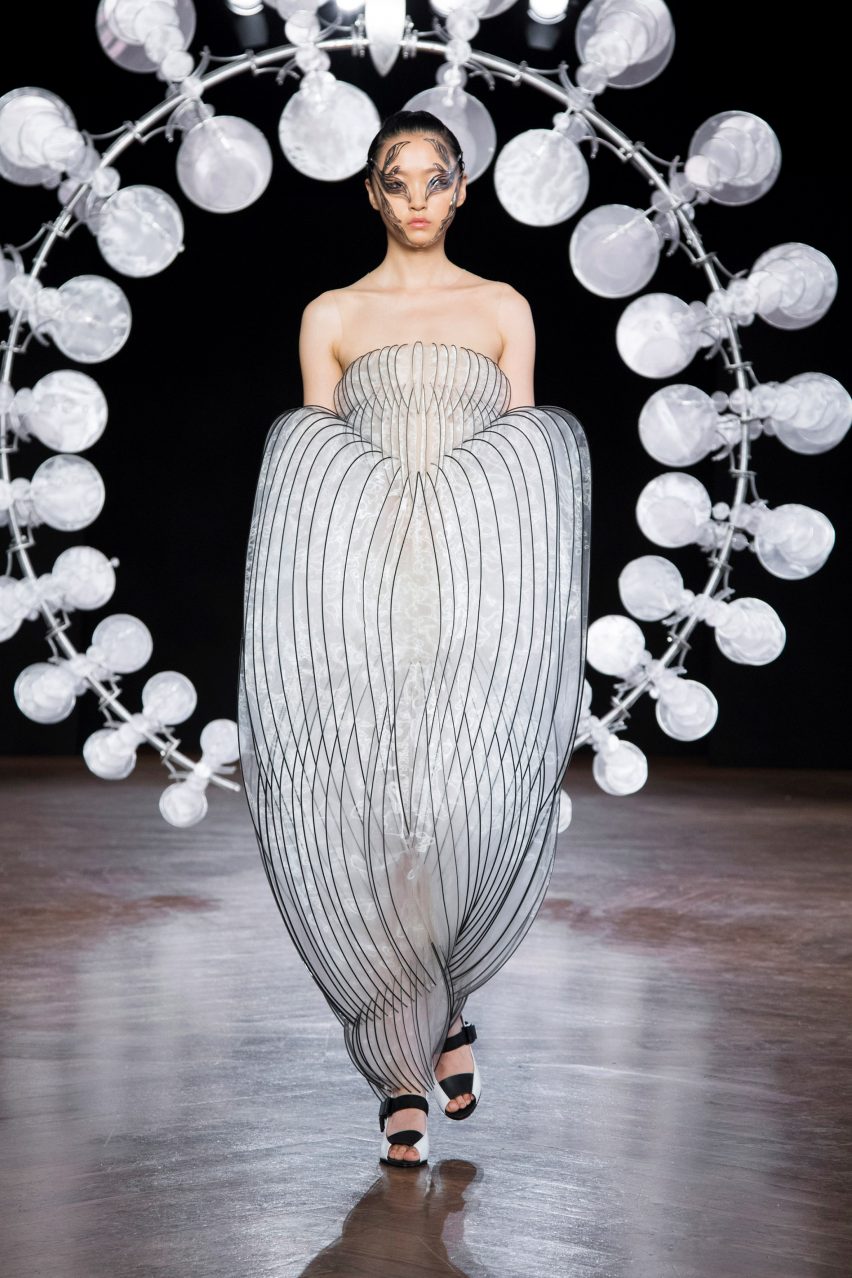
Using a combination of engineering and craftsmanship, the collection brings together elegant materials, such as luminous silk organza and duchesse-satin, with structural elements of aluminium and stainless steel.
Van Herpen adopted the ancient silk moiré weaving technique for the collection, which uses multiple layers of rippling fabric to create the illusory effect of a shimmering surface.
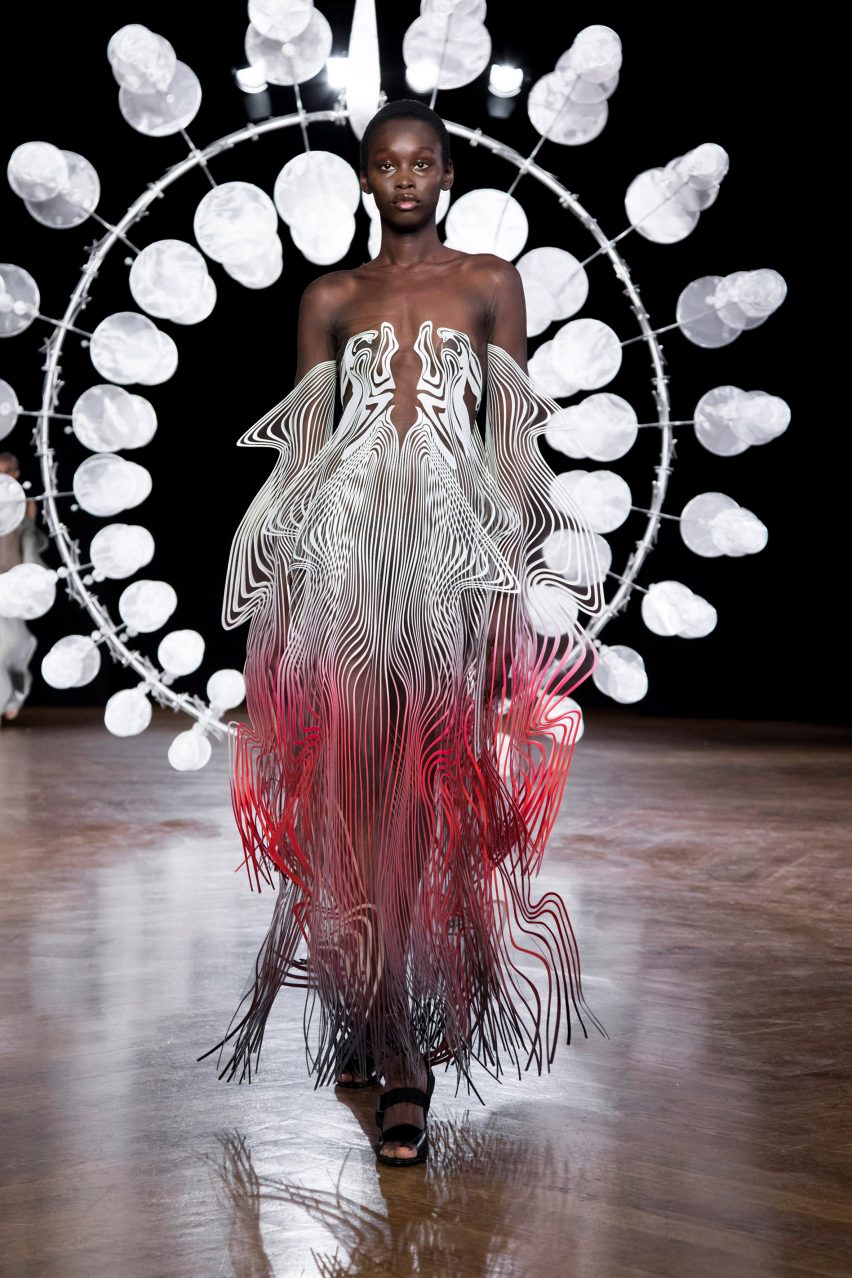
"The Hypnosis collection is a hypnotic visualisation of nature's tapestry, the symbiotic cycles of our biosphere that interweave the air, land, and oceans," said Van Herpen.
"It also reflects the ongoing dissection of the rhythms of life and resonates with the fragility within these interwoven worlds," she added.
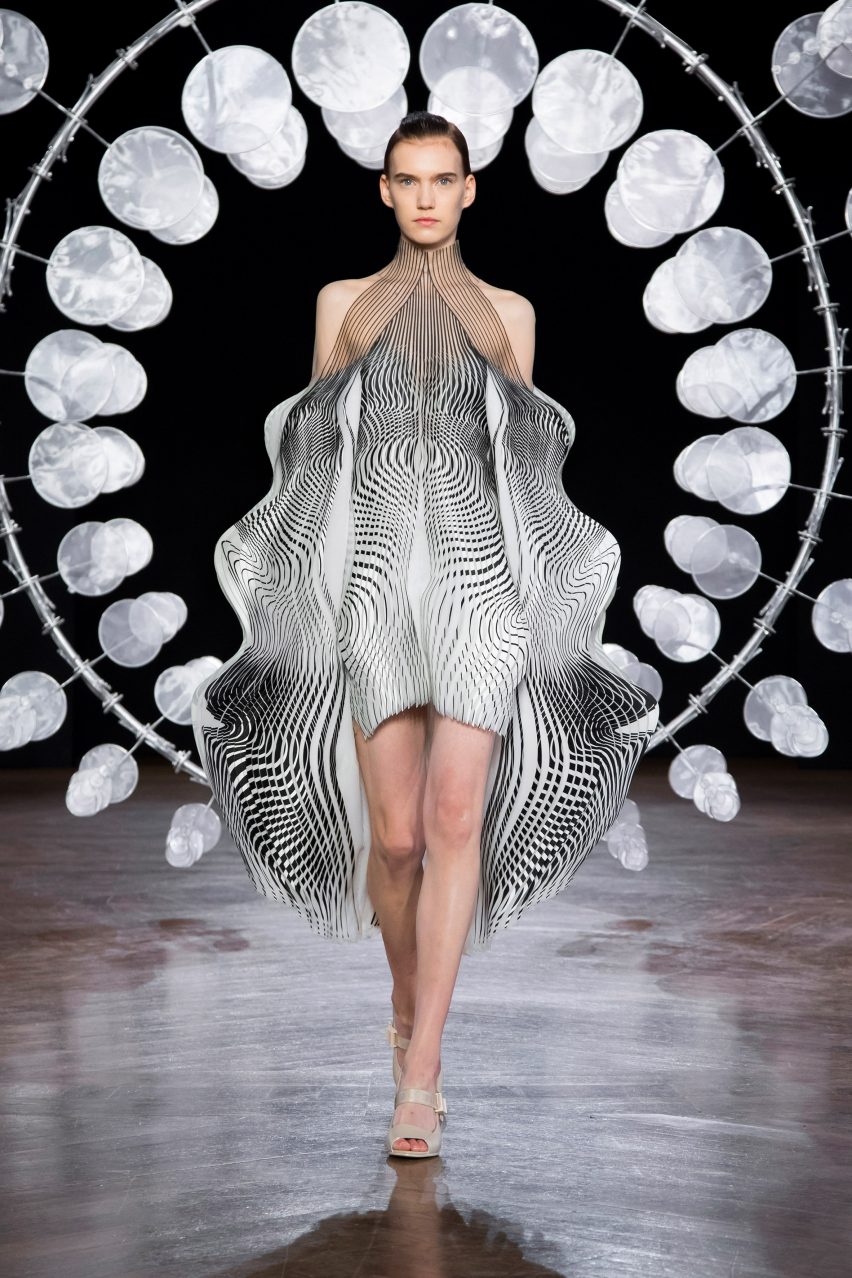
The designer worked with Anthony Howe for the show, which was staged around a spherical Omniverse sculpture created by the American artist that models passed through as they walked down the runway.
Numerous metal stems protrude from a central, circular structure. This was covered in layers of silk discs that slowly rotate to give the effect of a pulsating "portal"-like archway.
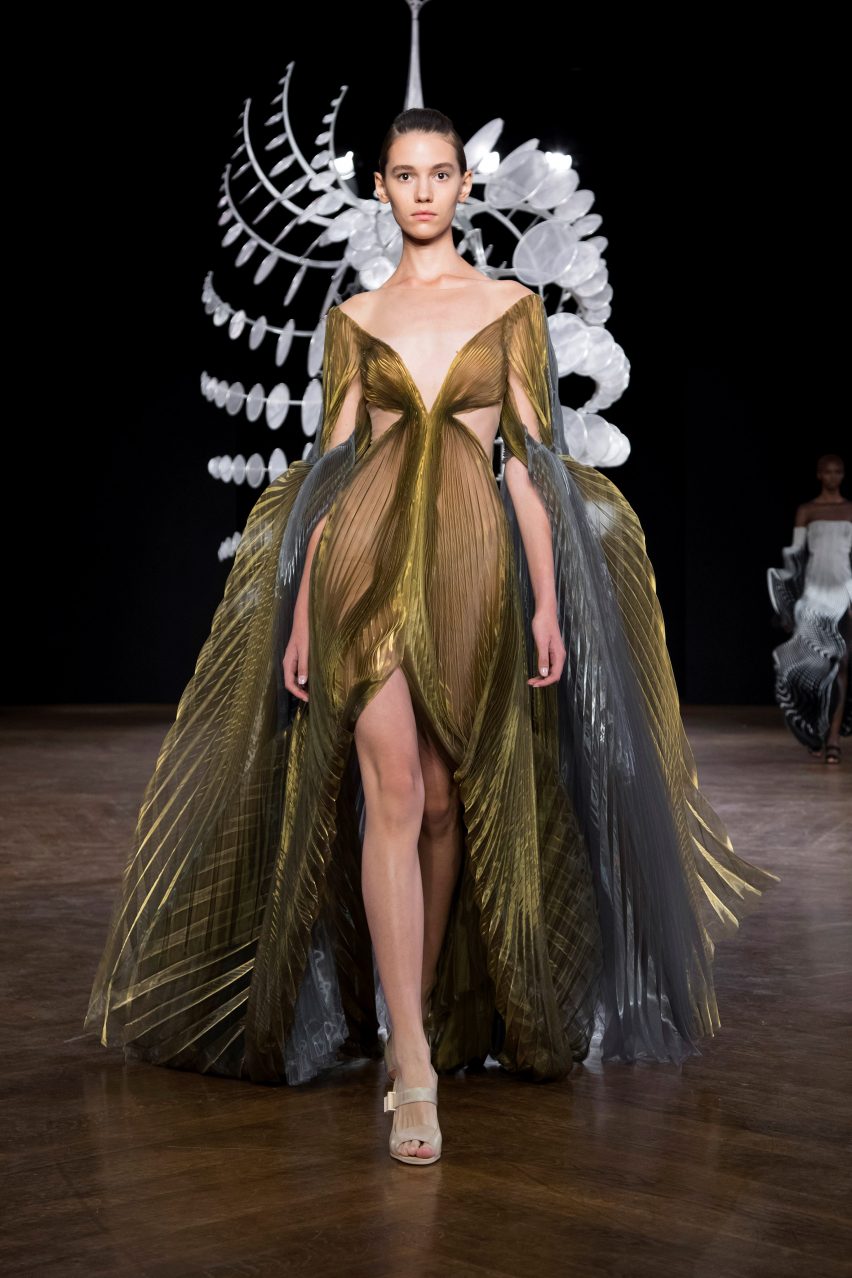
According to the studio, Howe's sculpture aims to represent a "universal life cycle", designed as an exploration of humans' relationship with nature.
"The three-dimensional cyclical harmony of Howe's kinetic sculptures is the wind beneath the wings of this collection," said the studio.
"The meditative movement of the Omniverse serves as a portal for the collection and the models, encircling a state of hypnosis," it added.
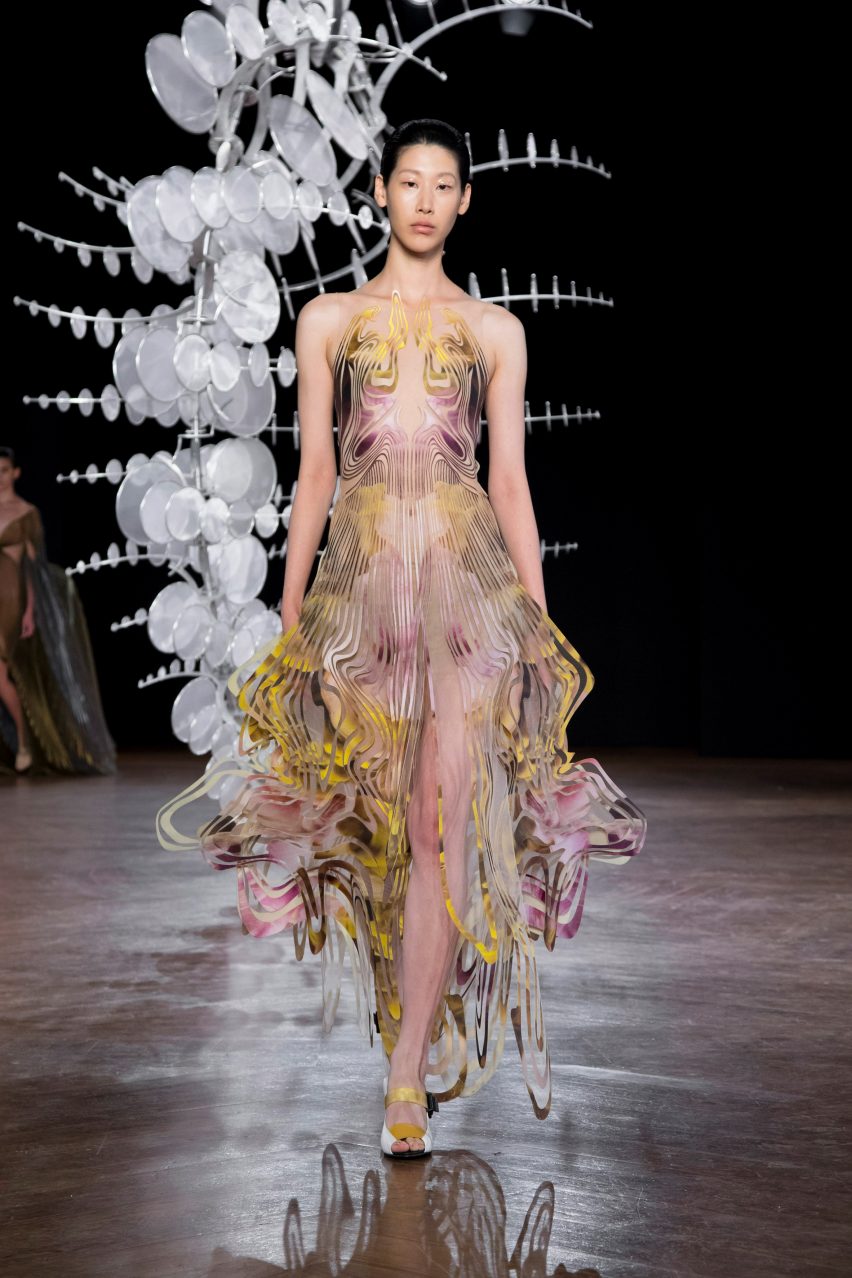
Van Herpen created each garment using the "hypnosis" technique, developed in collaboration with experimental sculptor Philip Beesley.
This process sees pieces of printed duchesse-satin cut using a plotter machine into tens of thousands of 0.8 millimetre mini ripples. These are then interlinked to move in fast, elliptical motions with the movement of the body.
One of the key looks in the 19-piece collection is the Infinity dress, presented during the show's finale, which appears to be continuously in motion.
A mechanism made from aluminium, stainless steel and bearings forms the skeleton of the dress, which has been embroidered with fine layers of feathers in a cyclical configuration. These appear to revolve around their own centre.
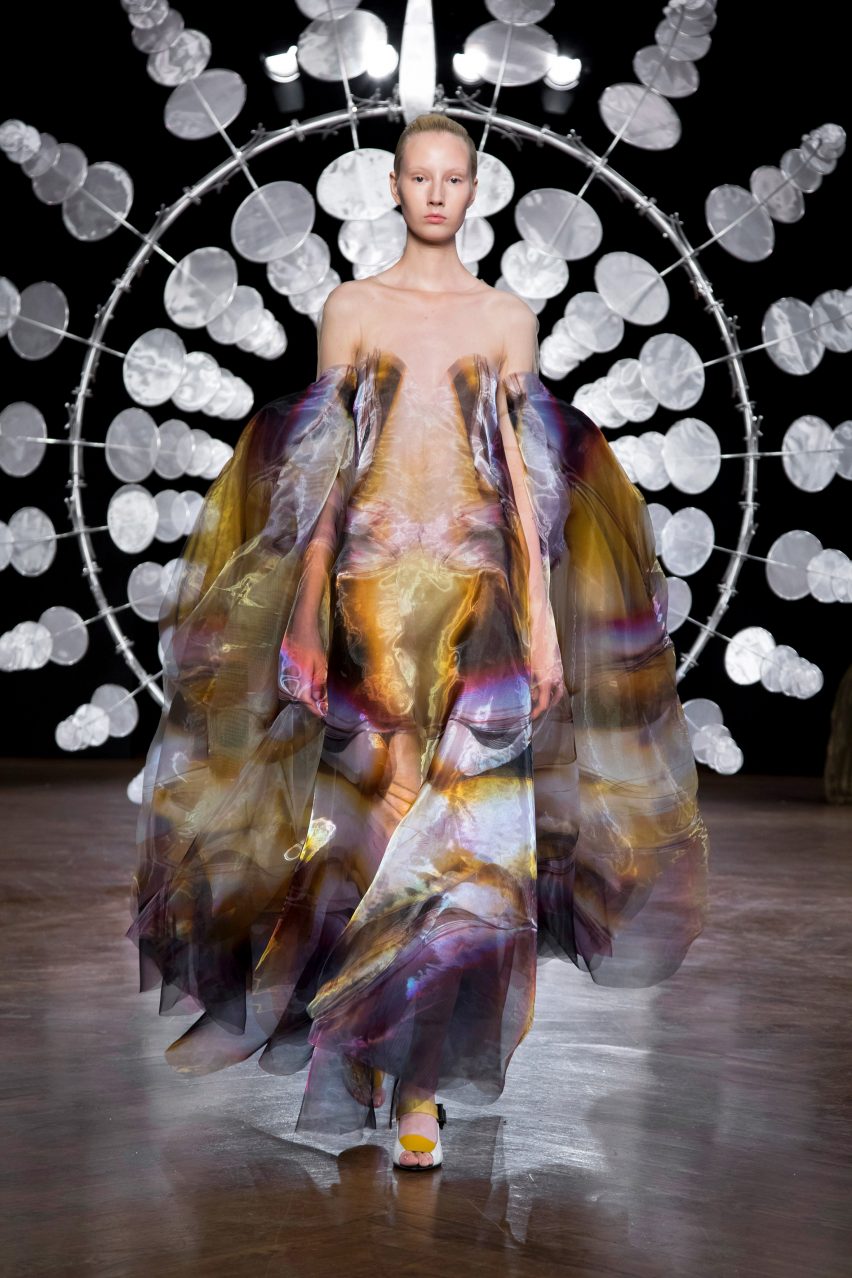
Several garments have been designed to reflect the Japanese art of ink-on-water marbling, also known as suminagashi or "floating ink".
The studio gradient-dyed silk to fade from white into burgundy, before laser-cutting the material into lines and heat-bonding them onto transparent tulle to appear as if they are flowing over the wearer's skin.
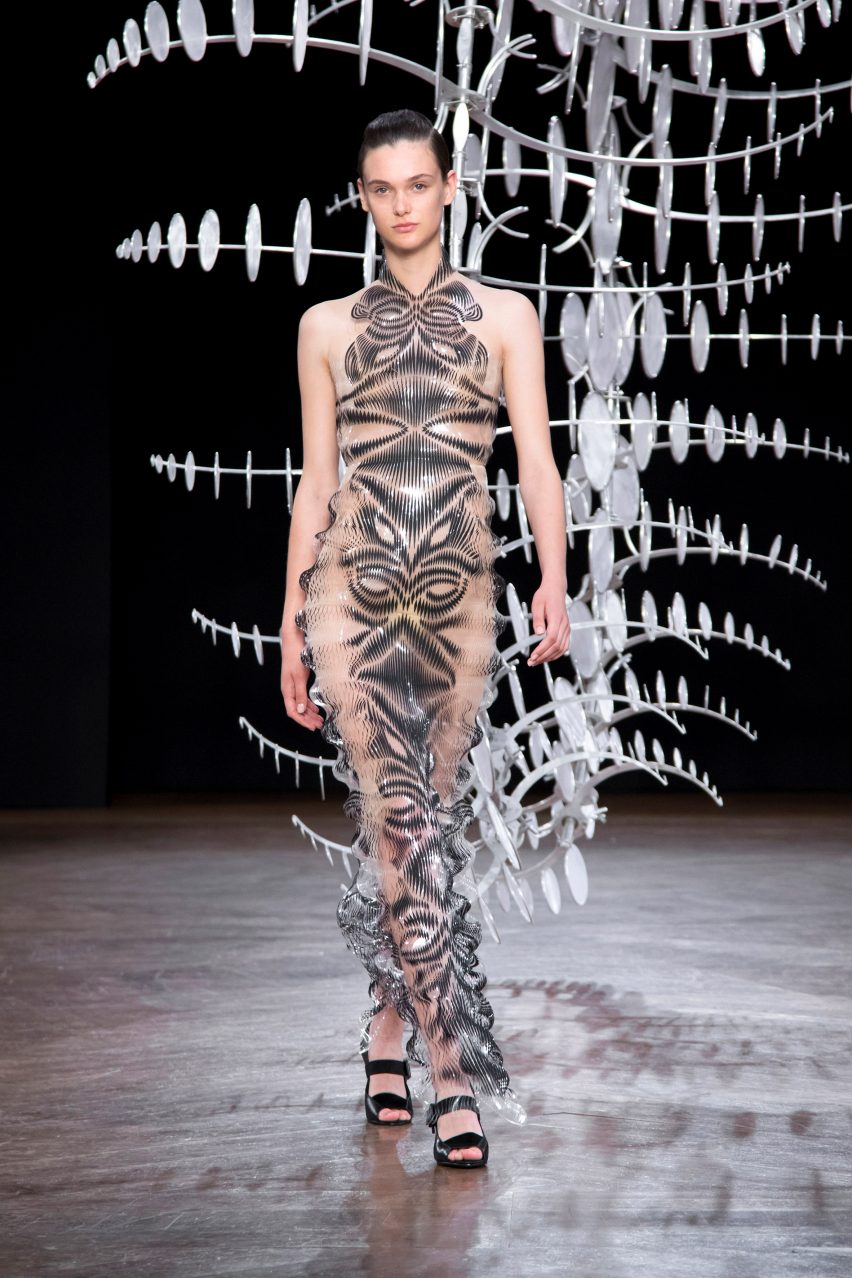
Previous collections have seen the Dutch designer create a series of dresses that replicate the movement of birds' wings in flight, and a line of hypnotic designs based on optical illusion patterns that distort the models' bodies.